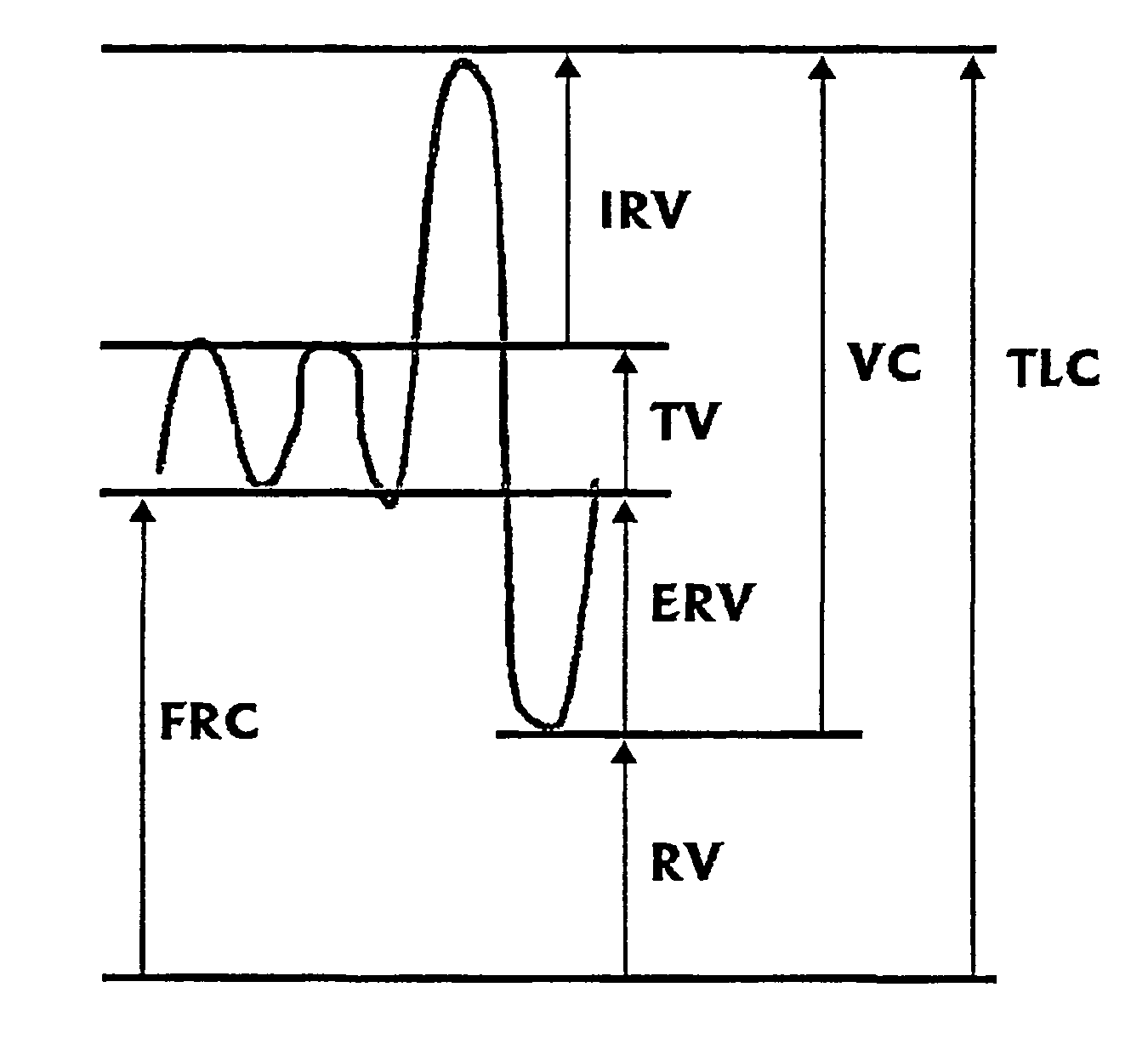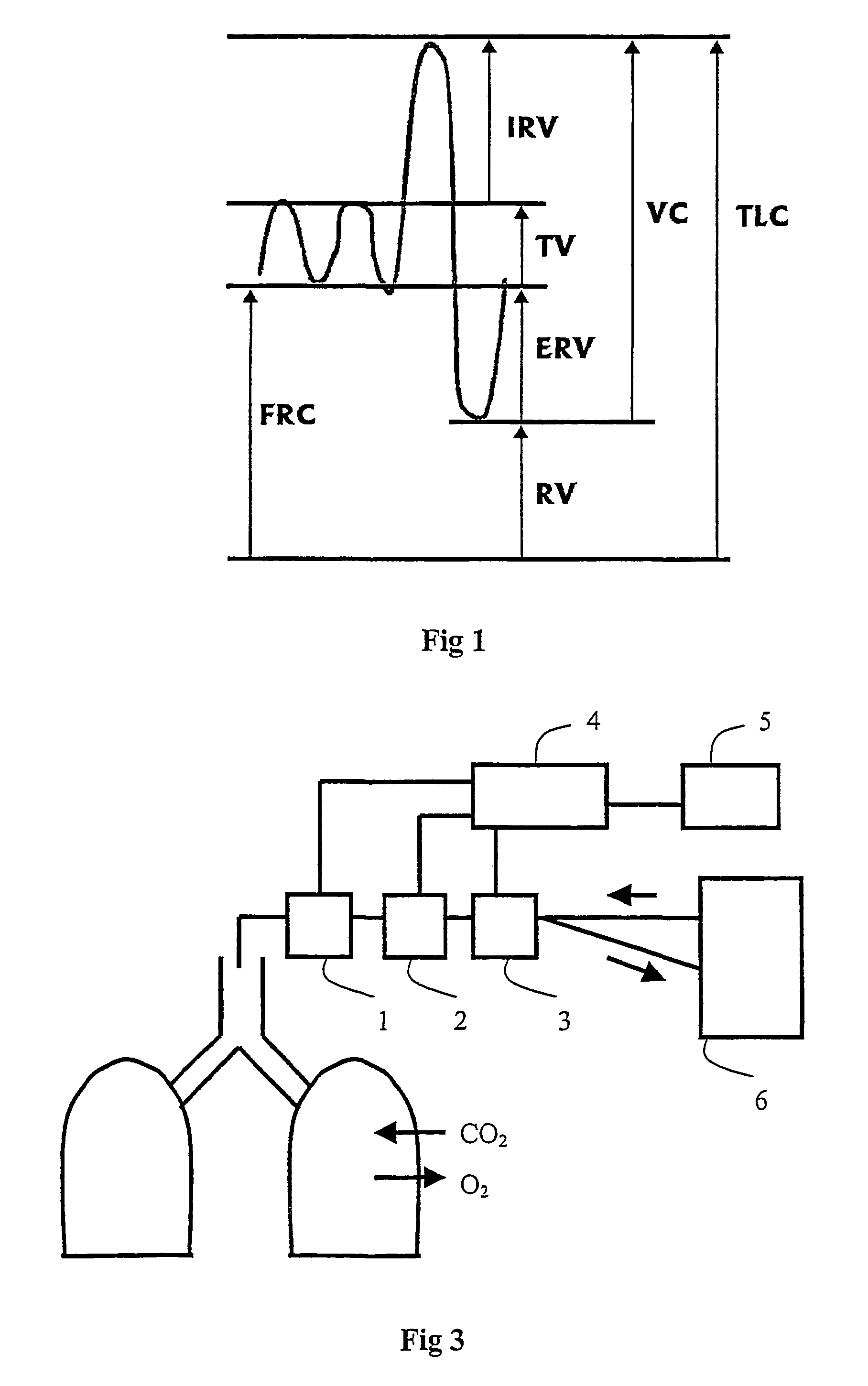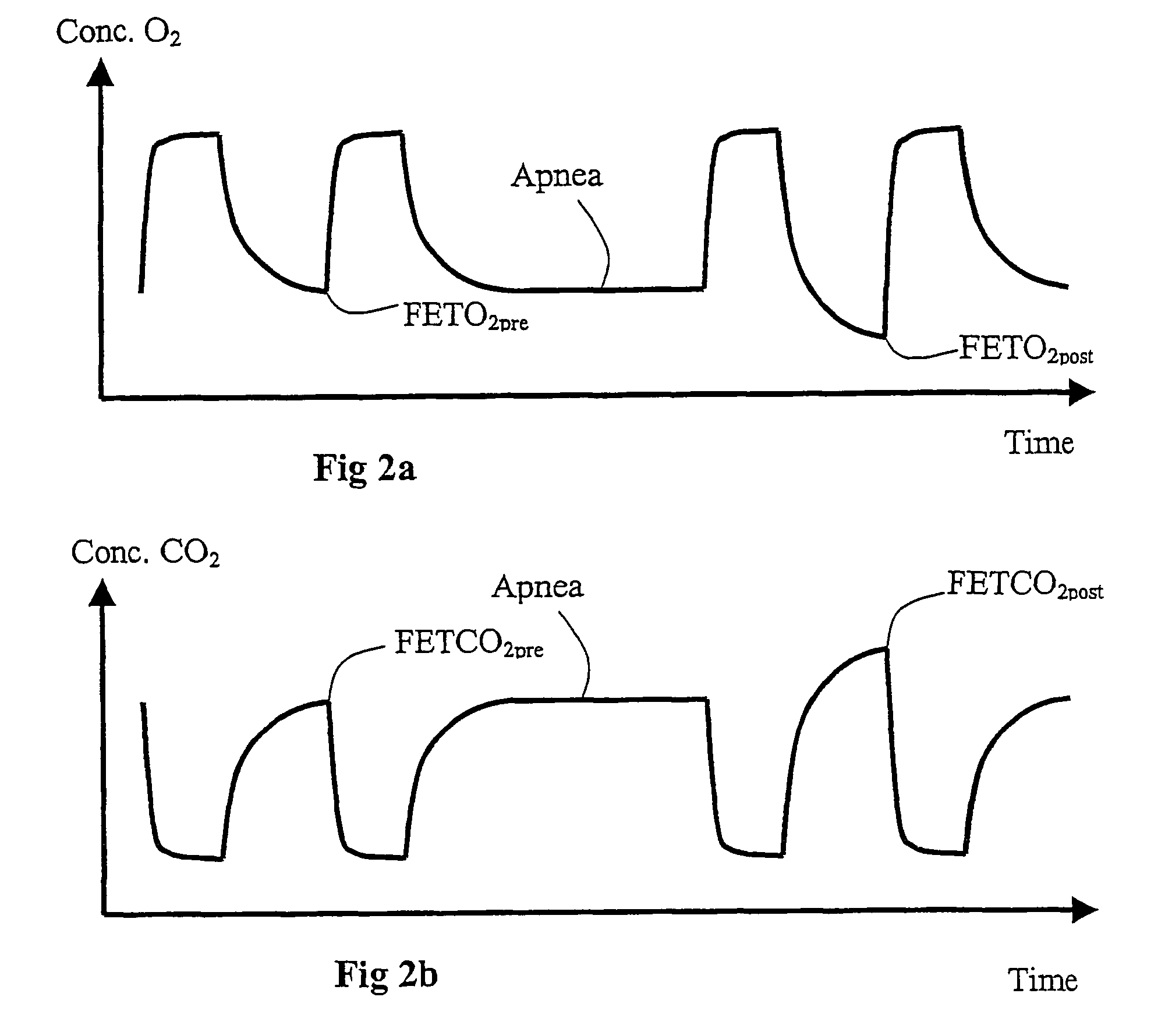Method and apparatus for measuring functional residual capacity (FRC) and cardiac output(CO)
a functional residual capacity and cardiac output technology, applied in the direction of sensors, catheters, withdrawing sample devices, etc., can solve the problem of reducing the frc volume, and achieve the effect of simple and inexpensive use, without causing any risk to the patien
- Summary
- Abstract
- Description
- Claims
- Application Information
AI Technical Summary
Benefits of technology
Problems solved by technology
Method used
Image
Examples
Embodiment Construction
FRC
[0072]The method for FRC estimation and FRC monitoring of the invention is based on the clinical observation that patients with small FRC and high oxygen consumption desaturate rapidly compared to “normal” patients. As a consequence changes in gas exchange parameters during different consecutive breathing cycles, such as during a defined apnea, can be used for determination of FRC.
[0073]The principle of the present invention is calculation of FRC based on a measured decrease in end-tidal˜alveolar˜oxygen concentration due to a known wash out of oxygen from the FRC during a short apnea (or other change of the ventilation pattern); i.e. the washed in volume of oxygen divided by the oxygen concentration difference gives the FRC volume. This is only valid if the FRC is not changing volume during the apnea. In this case the FRC is actually decreasing in volume with a volume equivalent to the washed out volume of oxygen. However, during the apnea there is also a wash in to the FRC of ca...
PUM
| Property | Measurement | Unit |
|---|---|---|
| volume | aaaaa | aaaaa |
| volume | aaaaa | aaaaa |
| tidal volume | aaaaa | aaaaa |
Abstract
Description
Claims
Application Information
 Login to View More
Login to View More - R&D
- Intellectual Property
- Life Sciences
- Materials
- Tech Scout
- Unparalleled Data Quality
- Higher Quality Content
- 60% Fewer Hallucinations
Browse by: Latest US Patents, China's latest patents, Technical Efficacy Thesaurus, Application Domain, Technology Topic, Popular Technical Reports.
© 2025 PatSnap. All rights reserved.Legal|Privacy policy|Modern Slavery Act Transparency Statement|Sitemap|About US| Contact US: help@patsnap.com



